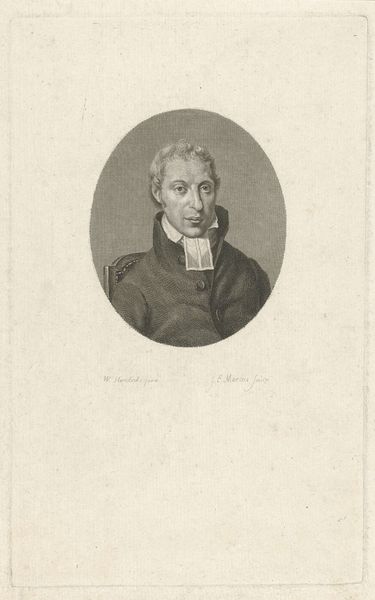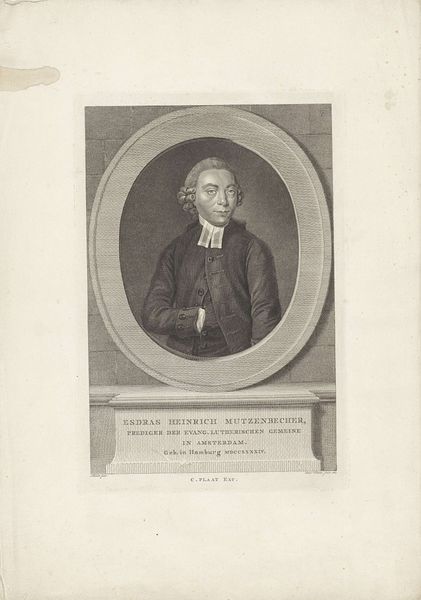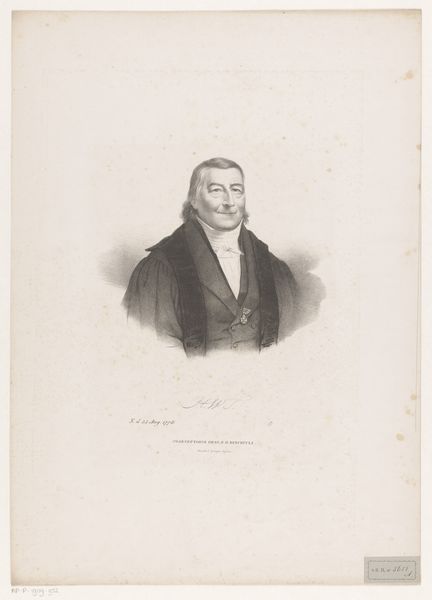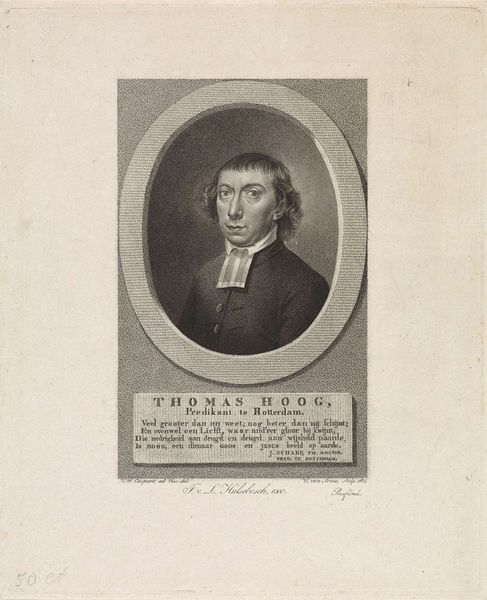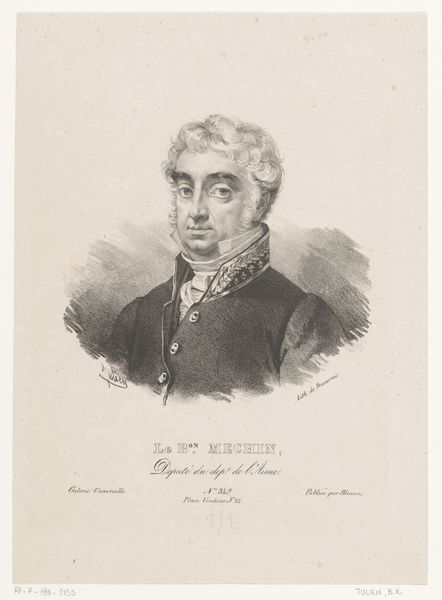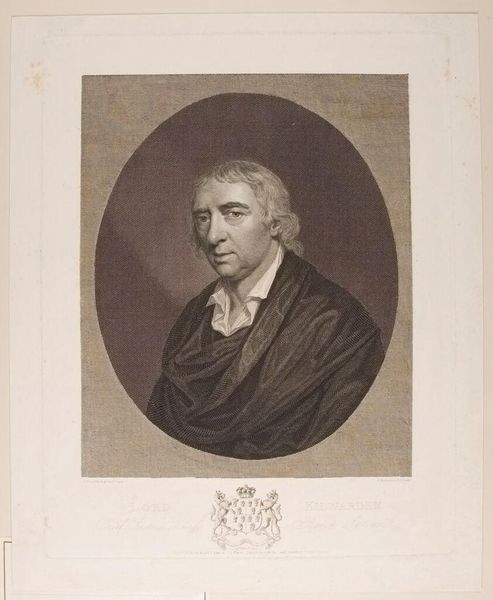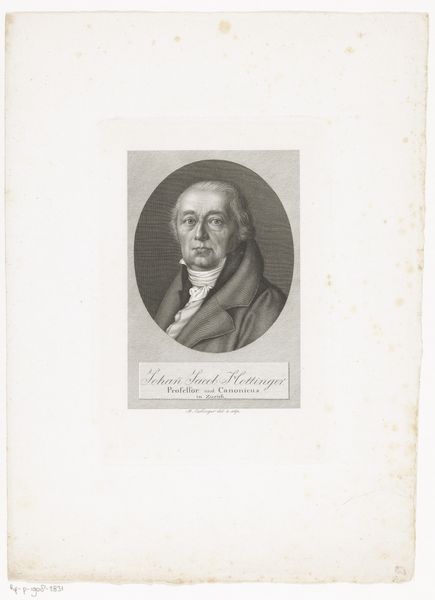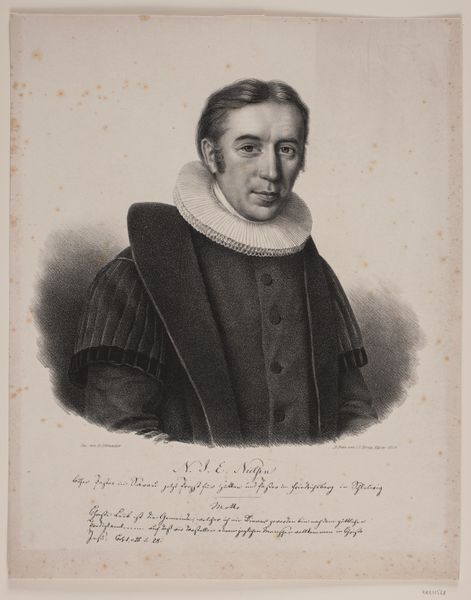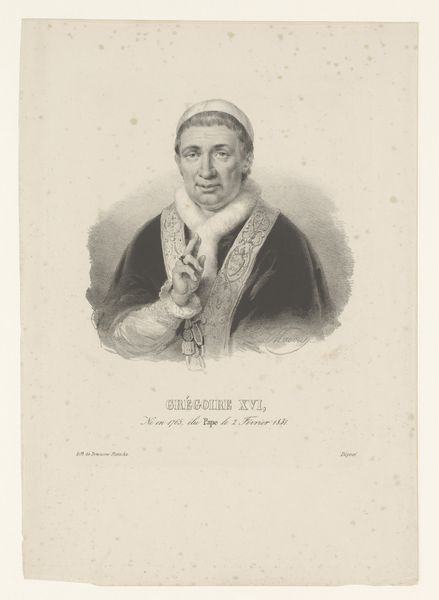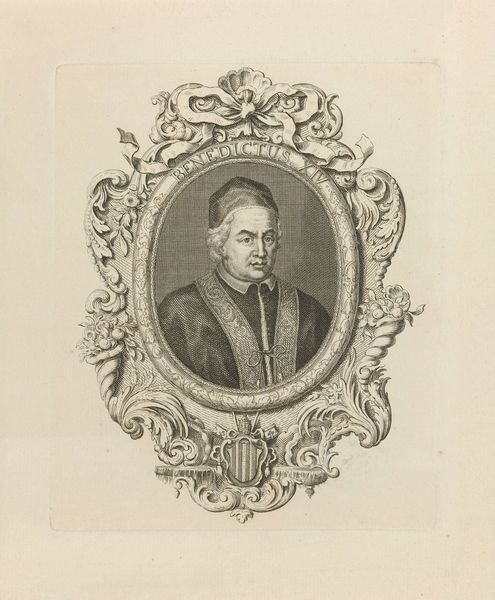
engraving
#
portrait
#
neoclacissism
#
engraving
Dimensions: height 370 mm, width 267 mm
Copyright: Rijks Museum: Open Domain
Curator: Looking at this artwork, I am struck by the rather severe countenance of the subject, rendered in a style that evokes neoclassical portraiture. Editor: Indeed, what you're seeing is a piece titled "Portret van George Hendrik Lagers." It is currently housed here at the Rijksmuseum. Though its precise creation date is a little vague – roughly 1793 to 1833 – we know it's an engraving. Notice the subtle shifts in tone that create volume, achieved through what looks like very fine linework. Curator: Right. Considering the context of its creation, particularly the rise of a more egalitarian societal view in Europe during this time, one must wonder about the labor and process involved. Was this engraving a commission, and if so, what social and economic factors led someone to produce a portrait in this way? Editor: It reflects a desire for accessibility—the reproducibility of engravings democratized imagery, expanding portraiture's reach beyond painted canvases and wealthy patrons. It became a tool in the distribution of particular kinds of messaging or idealizations. Curator: Exactly. So how does it function within the context of institutions and society at large? For what purposes would this imagery be used? This work perhaps granted visibility, bestowing some sort of significance or validation onto the subject by literally depicting and distributing his image among various publics. Editor: Good point. Given his clothing, the portrait certainly gives us the impression of respectability, and status in religious institutions, so perhaps an affiliation hoped to be signaled via this print. I'm most intrigued by how a relatively accessible medium intersects with displays of elitism in the social hierarchy. It almost feels like a reproduction of influence, made literal through the mechanical reproducibility. Curator: Absolutely, I think we agree that it all comes back to this tension between accessibility, dissemination, and, ultimately, how artworks like this one both mirrored and perhaps fueled a certain power dynamic within broader historical movements. Editor: Indeed. It is this interplay between process and perception that keeps me fascinated with artworks like this print.
Comments
No comments
Be the first to comment and join the conversation on the ultimate creative platform.

